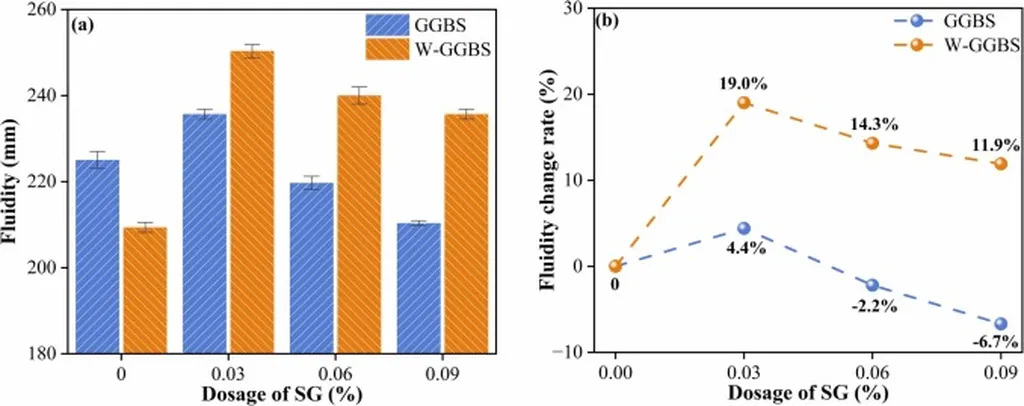In the quest to enhance the utilization of ground granulated blast furnace slag (GGBS) in cement-based materials, a recent study has shed light on the intricate dance between wet-ground GGBS (W-GGBS) and the workability of cement slurry. Led by Huahui Qi from the School of Civil Engineering, Architecture and Environment at Hubei University of Technology in China, the research delves into the often-overlooked nuances of wet grinding and its impact on cement slurry performance.
The study, published in *Case Studies in Construction Materials* (translated as *典型案例集*), reveals that W-GGBS, while promising, can significantly deteriorate the workability of cement slurry. “The longer the grinding time, the greater the negative impact,” Qi explains. For instance, when the grinding time was extended to 40 minutes, the fluidity of fresh cement slurry without polycarboxylate ether (PCE) dropped from 205 mm to 190 mm. For PCE-plasticized cement slurry, the fluidity plummeted from 235 mm to 170 mm.
The underlying mechanisms, however, are far from straightforward. For cement slurry without PCE, the large specific surface area of W-GGBS reduces the water film thickness (WFT), leading to lower fluidity. “It’s akin to trying to pour honey that’s been spread too thin,” Qi illustrates. However, when PCE is introduced, the story becomes more complex. W-GGBS demonstrates a superior affinity for PCE, improving its adsorption amount—which is beneficial for workability. Yet, W-GGBS also releases large amounts of cations during wet grinding, causing cross-linking of unadsorbed PCE, which is detrimental to workability.
The commercial implications for the energy sector are substantial. As the demand for sustainable and efficient construction materials grows, understanding the interplay between W-GGBS and cement slurry workability becomes crucial. This research provides a theoretical foundation for developing workability regulation measures, potentially leading to more efficient and cost-effective construction practices.
Qi’s findings not only elucidate the different mechanisms by which W-GGBS affects the workability of cement pastes but also pave the way for future innovations in the field. As the construction industry continues to evolve, such insights will be invaluable in shaping the development of next-generation materials and techniques.

